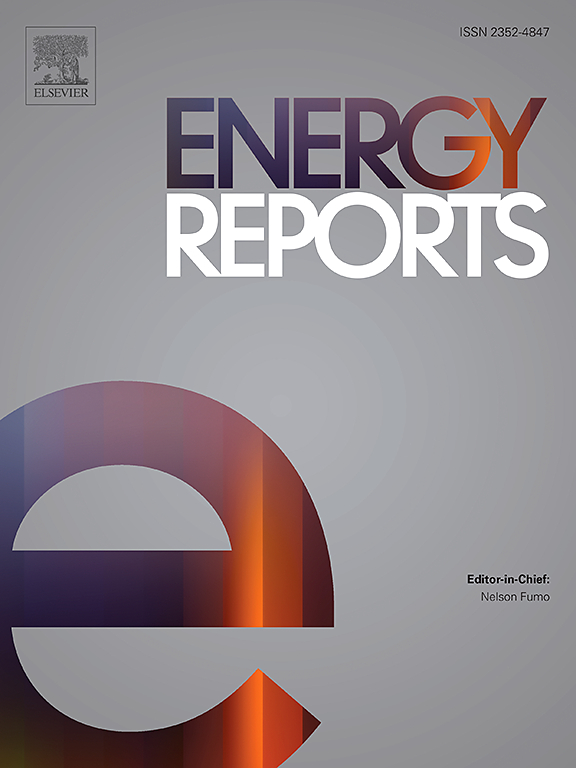A two-stage dynamic optimization strategy for wind-thermal-energy storage systems in energy and frequency regulation ancillary service markets with adaptive opportunity cost quantification
IF 5.1
3区 工程技术
Q2 ENERGY & FUELS
引用次数: 0
Abstract
Against the backdrop of high-penetration renewable energy integration, wind-thermal-storage integrated systems need to collaboratively participate in energy and frequency regulation ancillary service markets to enhance overall revenue. However, traditional optimization models neglect the opportunity costs among wind, thermal, and storage resources across multiple markets, leading to rigid resource allocation and profit losses. This study proposes a dynamic opportunity cost quantification method and a two-stage optimization framework combining Markov Decision Process (MDP) and Receding Horizon Control (RHC). The first stage uses MDP-based value iteration to generate day-ahead optimal dispatch strategies, while the second stage employs RHC for real-time rolling adjustment of unit outputs and market bids with adaptive opportunity cost weights. Simulation results demonstrate that the proposed model increases the system's total net revenue by 28.7 % compared to traditional approaches without considering opportunity costs and by 18.9 % versus static opportunity cost models. The framework innovatively enables flexible multi-time scale decision coordination, dynamic opportunity cost weighting, and reduced computational complexity via hierarchical optimization, providing efficient and adaptive decision support for multi-energy systems in electricity markets.
基于自适应机会成本量化的能量和频率调节辅助服务市场的风热储能系统两阶段动态优化策略
在高渗透可再生能源一体化的背景下,风热储一体化系统需要协同参与能源和频率调节辅助服务市场,以提高整体收入。然而,传统的优化模型忽略了多个市场中风能、热能和储能资源之间的机会成本,导致资源配置僵化和利润损失。本文提出了一种动态机会成本量化方法和一种结合马尔可夫决策过程(MDP)和后退水平控制(RHC)的两阶段优化框架。第一阶段使用基于mdp的值迭代来生成日前最优调度策略,而第二阶段使用RHC来实时滚动调整单位产出和具有自适应机会成本权重的市场报价。仿真结果表明,与不考虑机会成本的传统方法相比,该模型使系统的总净收益增加28.7 %,与静态机会成本模型相比,该模型使系统的总净收益增加18.9 %。该框架创新性地实现了灵活的多时间尺度决策协调、动态机会成本加权,并通过分层优化降低了计算复杂度,为电力市场中的多能源系统提供了高效、自适应的决策支持。
本文章由计算机程序翻译,如有差异,请以英文原文为准。
求助全文
约1分钟内获得全文
求助全文
来源期刊

Energy Reports
Energy-General Energy
CiteScore
8.20
自引率
13.50%
发文量
2608
审稿时长
38 days
期刊介绍:
Energy Reports is a new online multidisciplinary open access journal which focuses on publishing new research in the area of Energy with a rapid review and publication time. Energy Reports will be open to direct submissions and also to submissions from other Elsevier Energy journals, whose Editors have determined that Energy Reports would be a better fit.
 求助内容:
求助内容: 应助结果提醒方式:
应助结果提醒方式:


